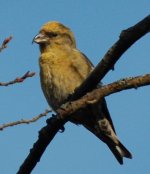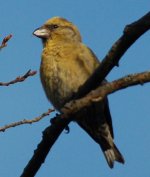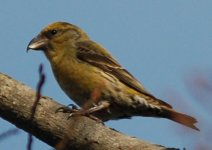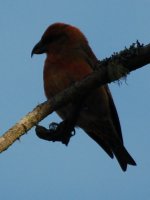Capercaillie71
Well-known member
Any crossbill experts out there care to pass an opinion on these photos? They were taken in Deeside, Scotland. I was recording sound too, but, although this bird sang for a short while, it refused to make any flight or excitement calls that would have been diagnostic. I did record some flight calls and excitement calls of birds close by but they were quite faint/noisy and I haven't been able to produce a good sonogram.
I recorded some Common Crossbills of the 'Parakeet / X' type a couple of miles from where this bird was in December, so I suspect that's what this may be, but this bird was in a much more Scots Pine dominated plantation.
I recorded some Common Crossbills of the 'Parakeet / X' type a couple of miles from where this bird was in December, so I suspect that's what this may be, but this bird was in a much more Scots Pine dominated plantation.







